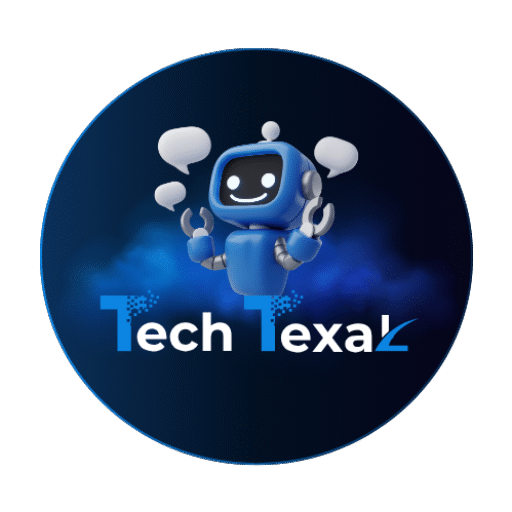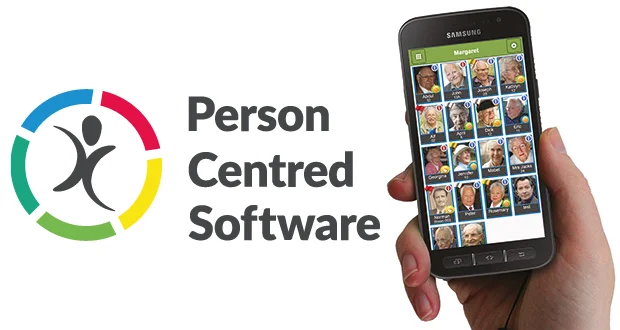Technology is not an option it is a must in the modern fast changing and sophisticated health environment. However one of the most impactful revolutions realized under the banner of these revolutions is the one actualized through developing and leveraging person centred software.
It was software that would put a person at the centre of the care process and it would empower both the caregiver and the care receiver to a much better quality of care.But what is person centred software and how can this make such a revolutionary change in care?
We explore within the following article the many facades which person centred software affords in terms of both benefit and negative aspects to be overcome not forgetting the future of thought.
What is Person Centred Software?
Person centred software is a unique set of software focused on the direct and particular needs and preferences of any person in one’s care.In comparison with the traditional models of care management system which have their basis on administration and collection of data person centred software majors on the well being of the individual.
This kind of software is intended to give support to the normal physical, social and emotional needs of individuals that it is placed under.Recent years have pointed to person centred care as an emerging key concept in the field of health care.
Various domains such as long term care mental health services and rehabilitation are considered to be existing best practice.It is the software that has imbibed principles that have lately brought about a vitally significant break towards making person centred care accessible and effective.

KEY FEATURES OF PERSONALIZED SOFTWARE
Characterization of person centred software therefore denotes a good number of features. Among them are those features that one would be found to differ from other kinds of care management systems.Some of these features include:
Individualized Care Plans:Those software tools at the heart of person centeredness create and manage care plans that are person centred and hold information that is personalized around the needs, preferences and goals of an individual.This also helps caregivers document and monitor care services in a manner that allows them to line them up with a person’s wants.
Real-Time Data Availability: Person centred applications contain information that is solely in relation to the personal past history, allergies and current medications besides any other information that is important according to the situation. All such real time data within the accessed data should be available in real time from the concerned persons.
Family and Caregiver Involvement: Another key feature of person centred software is its subsequent implication and involvement of other caregivers particularly family members in a care process.This often features on the software users family to help them keep up to date with the care progress of their relative.
Be able to communicate with the care provider which encourages family collaboration on the best approach towards the desired outcome.This then can be very effective as person centred software in such a user friendly interface.
The software is developed targeting the user: Either an easy and intuitive end user a caregiver a family member or a care receiver.This will ensure that the user interface will be friendly so the software might be easy to navigate reduce the learning curve and result in few errors.
Compliance and Reporting: The software ensures adherence to all the requirements and guidelines set by any regulatory bodies.The software generates the reports and documentation required for the audits and inspections that are necessary.This way a care provider can easily demonstrate without any problem that they are meeting the correct standards.
Advantages of Using Person Centred Software
Person centred software has a number of advantages for care providers and the people they care for
Person centred care:The approach taken is person centred and evidence based and caters to what the person needs and prefers. More than that the software is tailor made and corresponds to the needs of the person under consideration to the extent that he/she is provided with the necessary support with dignity and independence.
Improved Coordinated Care: Person centred software helps to improve communication among caregivers and other people concerned with the individuals issues thus smoothing coordination and care among everybody.
Improved efficiency: Automation in book keeping and planning the reports reduces the quantum of work that is supposed to be sorted by the caregiver thus leaving them with an able chance to spend more energy and time in offering their service.This should boost efficiency not only on the part of the caregivers but also of those bearing the care.
Empowering People: According to the Open University, person directed software will have an empowerment value for many people in that they will have a say in their care. Having available options for individualized care plans and an ability to express one’s preferences a person stands right in the centre of the care process.
The chances of errors reduce to nil with access to data in real time, coupled with automated documentation in person centred software. These dimensions are amazingly correct in the context of healthcare. Even a small mistake in this area can impact someone’s life very seriously.
Compliance with Regulations: One of the key concerns for everybody in care is to meet the regulatory demands. Person centred software makes it easy by ensuring that all the documents are in place and that care is delivered with respect to well driven standards.
Challenges in the Implementation of Person Centred Software
Even though the software is beneficiary in allowing for more accurate and effective diagnosis the implementation of the software is not a walk in the park.The common challenges agreed with to arise most frequently are:
Cost: Acquisition of the software training of the staff and maintaining the software are overheads for care providers especially the small scale ones.
Training and Adoption: No software however much user friendly should be an exception to the rule of implementation training and support. Particularly when it comes to shredding knowledge and buffing skills related to software. It takes quite some time to ramp up. Indeed, it may even need enduring support.
Privacy and Security: As dependence on digital tools for the same surges, data privacy and security gain an extraordinary significance. Hence care providers should make sure that the person centred software used strictly abides by the laws of data protection and safe custody of sensitive information.
Adopter Resistance: Similar to all innovations, the adoption of the software by caregivers and care-involved parties may have its own resistances.This would be best solved by full communication of the ways in which the software would make things better.
Systems in Use: Most care providers have already invested a lot in diverse systems to maintain different care aspects. There might prove to be a very complicated process of integration with the already existing person centred software hence pulling up more resources behind it.
Future Person Centred Software
With technology advancing toward its application in care future prospects for person centred software are quite high. Introducing artificial intelligence and machine learning into the software that reeducates care would be another of the upcoming trends in the near future.
This kind of software will involve analyzing large pools of data for patterns and trends of customers which might make it easier to provide more tailored and predictive care needs.
Mobile and Remote Care With the rapid increase in mobile device usage these days.
It is only expected that a majority of person centred software will be deployed through mobile applications everything will be almost reachable on the go for the benefit of the caregiver and the family members.The upward trend of necessity for person centred software also activates an upward trend for remote care either through virtual consultations or monitoring.
Interoperability: With the health sector proceeding further into digitization the ability for software to interface with other held systems, typology is going to be very pertinent. Person centred software is going to well integrate with other health information kind systems in a way to ensure continued patient care across different care settings.
Personal Health Records: The concept of managing and maintaining personal health records evolved to greater significance over time, to be specific by individuals who had been empowered and wanted to take responsibility for their health status.In the future the development of person centred software would be of great significance to empower individuals in managing and controlling their health records.
Legal and Regulatory Changes: As governments and their regulatory environments learn to appreciate what person centeredness means they can help ensure this is either legislated or regulated as a change in the software to be used or otherwise required within any part of the care sector.This may then drive more general uptake.
Data Analytics and Insights: One of the most critical pros that person centric software brings with it is this ability to slice and dice the data to come out with insights on how to act. So predictability functions will start being built into the system. while in the near future data analytics tools will start suggesting actions to care providers for improved care outcomes.
Case Studies and Real life Examples
Let’s take a look at some real world examples to get a better sense of what impact the person centred software is having:
People who live in long term care settings have actually relied on the software to support the improvement of their lives.Care plans can take assurance from which the individual need can be assured to be addressed.For instance the software will be in a position to trace a daily set of activities,preferences or even health status in such a way that the caregiver would offer a guided kind of support given to a resident in a facility.
The person oriented software will also support mental health services.In very many settings the software will assist the generation of care plans by flagging out subjective mental health needs for each particular.This might incorporate adherence to medication progress in therapy and communication from family members.
Home care software supports the product in carrying out the services that fit the exact needs and desires of the receiver all within their homes. The software guides users through the documentation of care,observation of health status and communication in real time for better outcomes and satisfaction in caregiving.
Hospices: Center focused software is being viewed as a great aid to hospices in providing end of life care. It truly provides caregivers with the opportunity to focus on the psycho social and spiritual needs of a person while assuring that the physical well being of the client is fine.Family members are also able to follow the care that a loved one is receiving therefore gaining peace of mind during their difficult time.
FAQs
What is person centred technology?
Person centred technology is a software tool designed individually on a need to person basis and also on his/her choices.It helps create personalized care plans and gives support to caregivers in providing tailor made care.
How will person centered technology improve quality care?
By accounting for individualized care plans and access to real time data person centred software guarantees that care will be custom on the specific needs of each person therefore quality and effective care.
Can family members use person centred software?
In fact most of the person centred software involves the participation of the family members in keeping updated about the loved one’s care and communication with the carers in the process.
Is person-centred software hard to use?
Any software developed relative to this vision will be easy to navigate and use for the individual receiving care,the carer or even family members given its person centeredness.
How is this software going to guarantee the protection of data?
Designed with many security functions,person centred software would adhere to the laid out stipulations on data preservation.
Who can use the person centred software in care?
It is applied in long term care facilities,mental health services,home cares and hospices to advance the delivery of personalized care.
How person centred software helps?
It documents automatically,a care provider easily fulfill all required reports and ensures that care delivery is within set benchmarked standards as required by the regulatory.
What Challenge in implementing person centred software?
Implementation cost staff training concerns about data privacy and protection resistance to change and integration of the software into the current system are of course common challenges or limitations.
Can it be accessed on mobile devices?
Specifically most software that is centred on the person can be accessed using a mobile application or at least their use is optimized with their interface on mobile devices to enable caregivers and family members to make field visits.check how information in regard to the care is faring on and if need be make changes to the same.
What is the future for Person Centred Software?
The future of person centred software will thus integrate the advances that AI will bring, provisioning more and more for mobility interoperability with the rest of the systems and linkage to personal health records that permit personalized and efficient care.
Conclusion
Person centred software is therefore a very high notch step within the care fraternity bringing so wide a range of benefits in raising the quality of care and to empower people.Other implementations of the software should have been effective but it is applied with full potential in changing the delivery of care.
On the other hand the rise of new sophisticated technology and an equally increasing demand for customized care services places the ascendancy of person centred software on the threshold of taking the lead in sculpting the direction of future developments in the health field.
The investment in person centred software lies strongly in good value investment in care but more out of a need than anything.It will leave care providers sure that they are delivering the ideal standard of care and achieving expectations from them.
Be it long term care mental health services, home care or hospices person centred software will serve to transform the delivery of care into something that is more personalized compassionate and effective implying better results.




